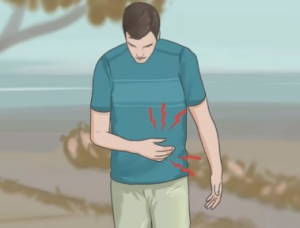Pancreas pain occurs following the inflammation of the pancreas. The pain is commonly referred to by its technical name, pancreatitis. Pancreatitis can either be chronic or acute.
Chronic pancreatitis
When the pancreas has been suffering inflammation for a long time, this form of pancreatitis goes by the name ‘chronic pancreatitis’. Chronic pancreatitis usually occurs following acute pancreatitis. It could also be caused by heavy consumption of alcohol. It is important to note that while consuming alcohol heavily, the symptoms may not seem evident for years, but present themselves suddenly in a severe manner.
Acute pancreatitis
Acute pancreatitis happens when the pancreas becomes suddenly inflamed only for the pain to disappear after sometime. The inflammation may either present itself as a mild discomfort or an intense illness that’s potentially life-threatening. After receiving the right treatment, most victims of acute pancreatitis normally end up recovering wholly.
When acute pancreatitis presents itself in its most severe form, the results are usually serious damage to the tissues, formation of cysts or infection. Bleeding might also occur in the pancreatic gland. Organs including lungs, the heart and kidneys might also get harmed by severe pancreatitis.
Pancreas pain – location and symptoms (Acute Pancreatitis)
The pain is centered on the upper abdominal area, at times moving towards the back. The pain is intensified after eating oily, greasy foods. There is tenderness and swelling in the abdomen. Other symptoms include nausea, vomiting, increased heartbeats and fever.

Location of Pancreas pain and symptoms in case of Chronic Pancreatitis
Chronic pancreatitis is characterized by pain that is dominant in the upper part of the abdomen. The pain may sometimes be so severe that it is debilitating in some patients. Due to food getting poorly absorbed, weight loss may be noticeable. The cause of this poor absorption of food is as a result of the failure of the pancreatic gland to release adequate enzymes for the breaking down of food. Yet another more serious symptom of chronic pancreatitis is the development of diabetes as a result of the cells in the pancreas that are responsible for the production of insulin getting damaged.
What causes pancreatitis?
In a majority of the cases, the cause of acute pancreatitis is either heavy consumption of alcohol or gallstones. Acute pancreatitis could also be caused by infections, certain medications, surgery or metabolic disorders. But the cause of acute pancreatitis in about 15 percent of the patients usually goes unknown.
For chronic pancreatitis on the other hand, the major cause is usually consumption of alcohol over a long period of time – 70% of the cases to be precise. Cystic fibrosis, gallstones, certain drugs, genetic pancreatic disorders and high triglycerides are the other possible causes. However there is no known cause for between 20 to 30 percent of chronic pancreatitis cases.
Factors that increase the likelihood of acute pancreatitis
While just about anyone can fall victim to pancreatitis, certain factors increase the likelihood of acute pancreatitis. They include:
– Having gallstones
– Heavy consumption of alcohol.
One of the initial symptoms of gallstones is actually acute pancreatitis. This is because by blocking the pancreatic duct, gallstones end up inducing acute pancreatitis.
Factors that increase the likelihood of chronic pancreatitis
The factors that increase the likelihood of chronic pancreatitis occurring include:
– Heavy consumption of alcohol over an extended period of time.
– Having gallstones.
– Existence of such conditions as lupus and high triglycerides.
– Particular genetic conditions like cystic fibrosis.
While the majority of cases of chronic pancreatitis are males between the ages of 30 and 40, it may also affect women.
Diagnosis
One of the tests conducted for the diagnosis of acute pancreatitis is measuring the levels of lipase and amylase in the blood. These are digestive enzymes and if they are present in high levels it is an indication of acute pancreatitis.
Other tests include testing pancreatic functions to determine whether the pancreas is producing digestive enzymes in the proper amounts. Tests may also be conducted to determine the level of damage done to the pancreatic cells involved in the making of insulin. If the disease it at an advanced stage, urine, stool and blood tests may be conducted.
Treating acute pancreatitis
The treatment of acute pancreatitis involves use of pain-relieving drugs and intravenous fluids. In very severe cases, the patients may need to be wheeled into the Intensive Care Unit where they will be put under close watch since pancreatitis can cause damage to the kidneys, lungs or the heart. If severe acute pancreatitis leads to the pancreatic tissue dying, the damaged or dead tissue may require removal in the event that an infection has developed. And in instances where the cause is gallstones, the bile duct may have to be operated on to remove the gallstones
Treating chronic pancreatitis
With chronic pancreatitis being difficult to cure, doctors usually first concentrate on relieving the pain. Insulin and pancreatic enzymes are also given to the patient as well as being put on a low-fat diet.
Surgery may also be necessary in order to assist in the relieving of pain in the abdomen, restoring the drainage of pancreatic hormones or enzymes. Surgery may also be the only way to unblock the pancreatic duct. Preventive measures are also encouraged such as quitting smoking and quitting consumption of alcohol.

